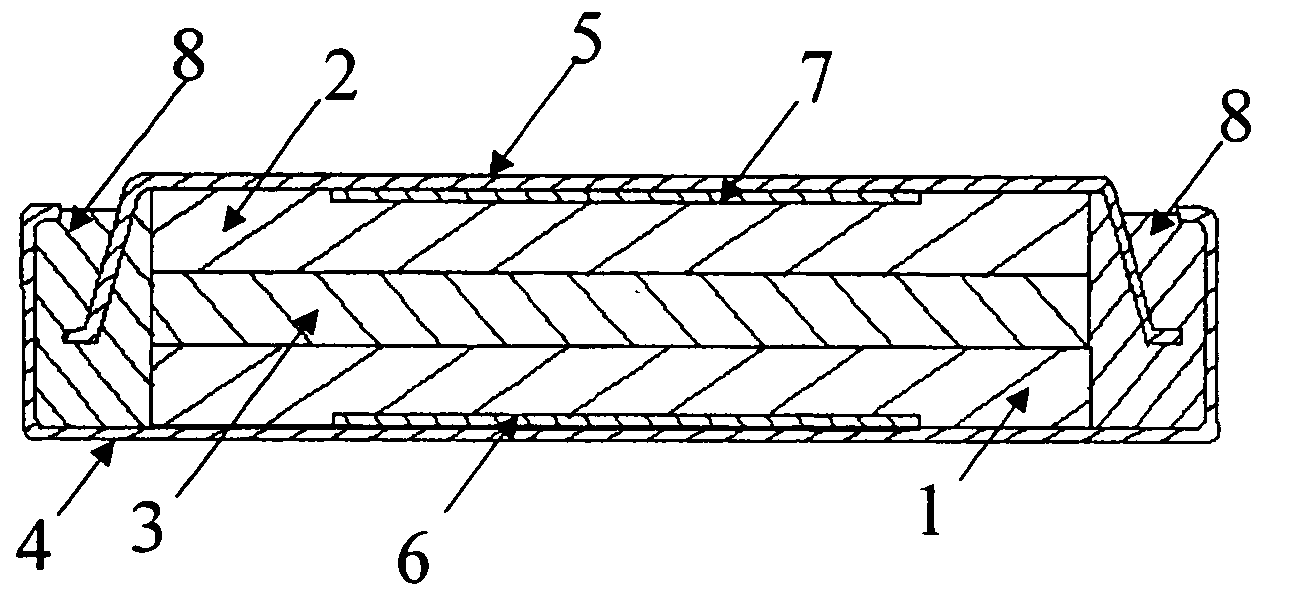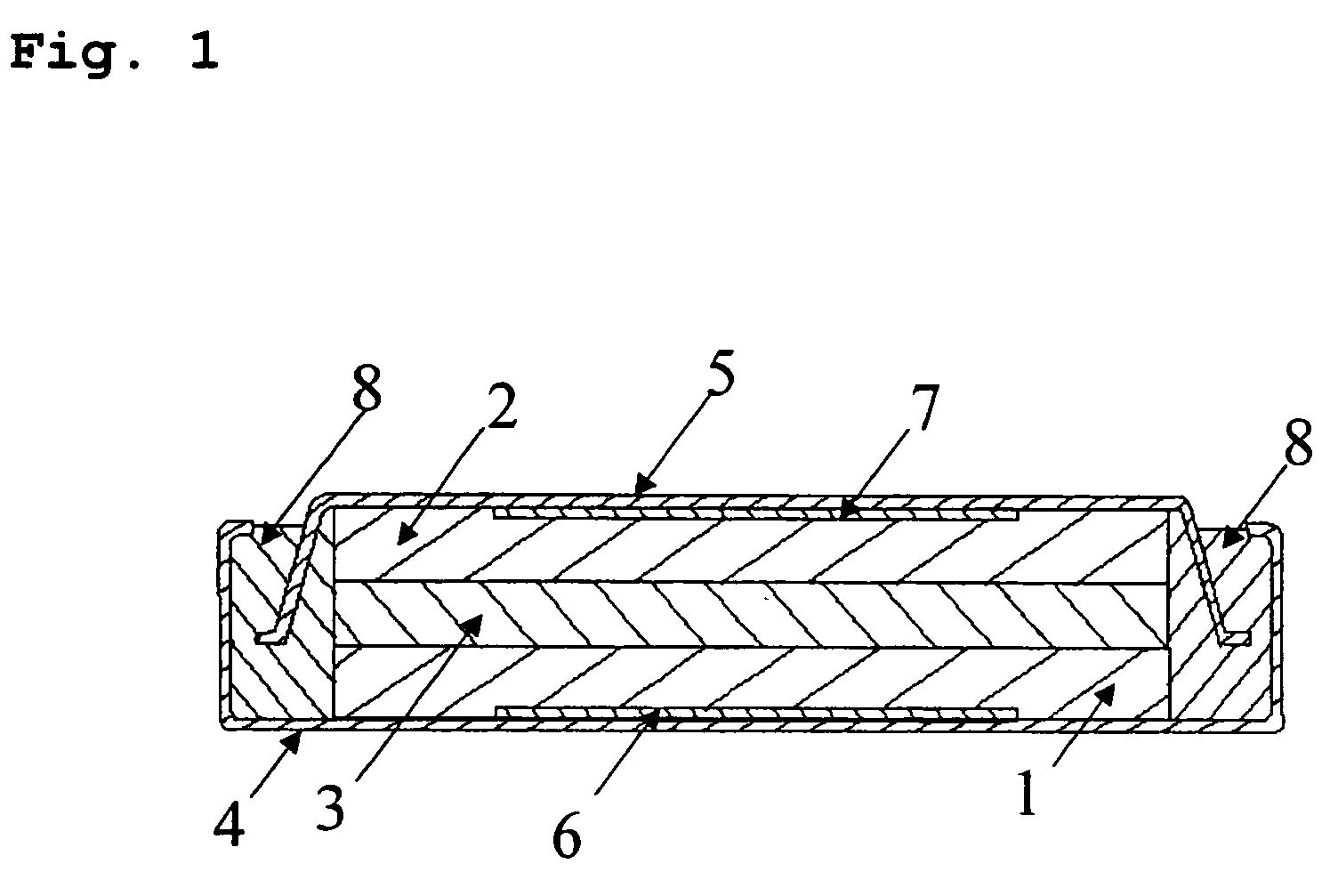Non-aqueous electrolyte for secondary batteries and non-aqueous electrolyte secondary batteries using the same
a technology of non-aqueous electrolyte and secondary batteries, which is applied in the direction of non-aqueous electrolyte cells, cell components, electrochemical generators, etc., can solve the problems of insufficient initial charge-discharge characteristics, insufficient charge-discharge characteristics, and insufficient charge-discharge characteristics, so as to improve the charge-discharge characteristics
- Summary
- Abstract
- Description
- Claims
- Application Information
AI Technical Summary
Benefits of technology
Problems solved by technology
Method used
Image
Examples
example 1
Preparation of Working Electrode
[0040] Graphite powder (d002=0.336 nm, Lc>100 nm) was placed in a reaction chamber, and while keeping the inside of the chamber at 1000° C., ethylene vapor was supplied using nitrogen as a carrier gas so as to cause a reaction. Thus, the surface of the graphite powder was covered with amorphous carbon. Using a Raman spectrometer (T-64000 made by Horiba Ltd.), the graphite powder was irradiated with argon ion laser having a wavelength 514.5 nm to measure the Raman spectra, the peak intensity (IG) in the vicinity of 1580 cm−1 and the peak intensity (ID) in the vicinity of 1360 cm−1 were obtained. The R value (ID / IG) of the graphite powder was found to be 0.21. The RA value (IA / IG) was calculated by separating the peak PD in the vicinity of 1360 cm−1 obtained by a laser Raman spectroscopy measurement using argon ion laser having a wavelength of 514.5 nm into a broad peak PA having a half-width of 100 cm−1 or greater and a peak PB having a half-width of...
example 2
[0046] A test battery X2 according to the present invention was prepared in the same manner as in Example 1 except that a mixed solvent of triethyl phosphate (TEP) and γ-butyrolactone (GBL) (volume ratio TMP:GBL=50:50) was used.
PUM
| Property | Measurement | Unit |
|---|---|---|
| RA | aaaaa | aaaaa |
| half-width | aaaaa | aaaaa |
| temperature | aaaaa | aaaaa |
Abstract
Description
Claims
Application Information
 Login to View More
Login to View More - R&D
- Intellectual Property
- Life Sciences
- Materials
- Tech Scout
- Unparalleled Data Quality
- Higher Quality Content
- 60% Fewer Hallucinations
Browse by: Latest US Patents, China's latest patents, Technical Efficacy Thesaurus, Application Domain, Technology Topic, Popular Technical Reports.
© 2025 PatSnap. All rights reserved.Legal|Privacy policy|Modern Slavery Act Transparency Statement|Sitemap|About US| Contact US: help@patsnap.com


